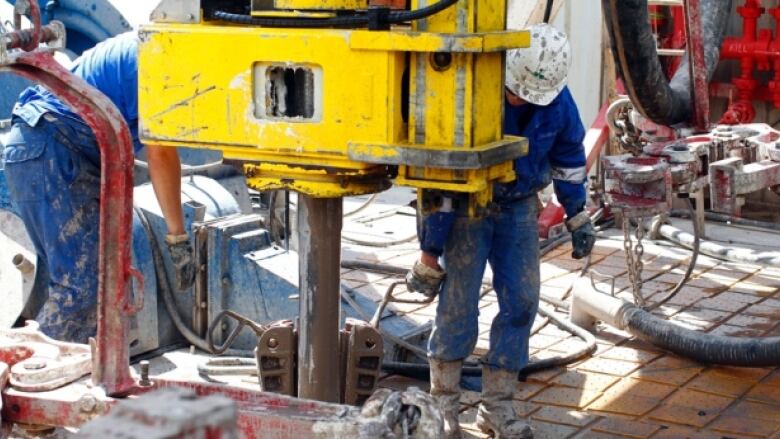Fracking rarely linked to rise in seismic tremors, U of A study suggests
Most fracking activity 'perfectly safe,' researcher concludes

Hydraulic fracking has almost no connection to seismic tremors in North America, suggests a study from the University of Alberta.

The two-year study revealed only oneexception. In Oklahoma, where seismic rates have changed dramatically in the last five years,researchers found a strong link between the injection of wastesalt water and a rise in tremors in the region.
Hydraulic fracturing, or fracking,is a process that involves pumping a mixture of water, sand and chemicals underground at high pressure to fracture rock and release trapped oil or natural gas.
Increased oil and gasproduction also produces more salt water, which is often disposed of underground.
"What we need to know first is where seismicity is changing as it relates to hydraulic fracturing or saltwater disposal," said geophysicist Mirko Van Der Baanin a media release.
"The next question is why is it changing in some areas and not others. If we can understand why seismicity changes, then we can start thinking about mitigation strategies."
Van Der Baan compared seismic rates from the top hydrocarbon-producing states in the United States and the top three provinces by output in Canada: Oklahoma, North Dakota, Ohio, Pennsylvania, Texas, West Virginia, Alberta., B.C. and Saskatchewan.
The study found no correlationbetweenseismicity and increased oil and gas production, despite eight-to 16-fold increases in production in some regions, challenging other studies which have found a definitive link.
However, in Oklahoma there was 85-per-cent correlation between salt-water disposal associated with oil productionand earthquakes in the region, researchers found.
They also discovered that human-induced seismicity is less likely in areas that have fewer natural earthquakes.
'Perfectly safe'
However, it appears other factors not yet fully understood must also be at play determining which fracking operations trigger earthquakes and which do not.
These other factors are likely related to local geology, local hydrology and the distribution of tectonic plates and fault lines.
"It's not as simple as saying, 'We do a hydraulic fracturing treatment, and therefore we are going to cause felt seismicity'," said Van derBaan, director of the Microseismicity Industry Consortium which is funded by companies like Shell, Chevron and Husky Energy.
"It's actually the opposite. Most of it is perfectly safe."
Fracking 'not going away'
While hydraulic fracturing has been in practice for decades, it has come under increased scrutiny in recent years over rising fears about its environmental impact.
Better research, includingimproved mapping of fault line systems and increased monitoring of injection rates,is essential in reducing the risks surrounding the much-maligned practice, said Van der Baan.
"Hydraulic fracturing is not going away. The important thing is that we need to find the balance between the economic impact and environmental sustainability of any industry," he said.
Human-induced seismicity and large-scale hydrocarbon production in the USA and Canadawas published in the June issue of scientific journal Geochemistry, Geophysics, Geosystems, published by the American Geophysical Union.
Clarifications
- The current version of the story clarifies that increased seismic actvity in Oklahoma is due to salt-water disposal, not hydraulic fracturing.Jul 04, 2017 1:48 PM MT












_(720p).jpg)


 OFFICIAL HD MUSIC VIDEO.jpg)
.jpg)



























































































